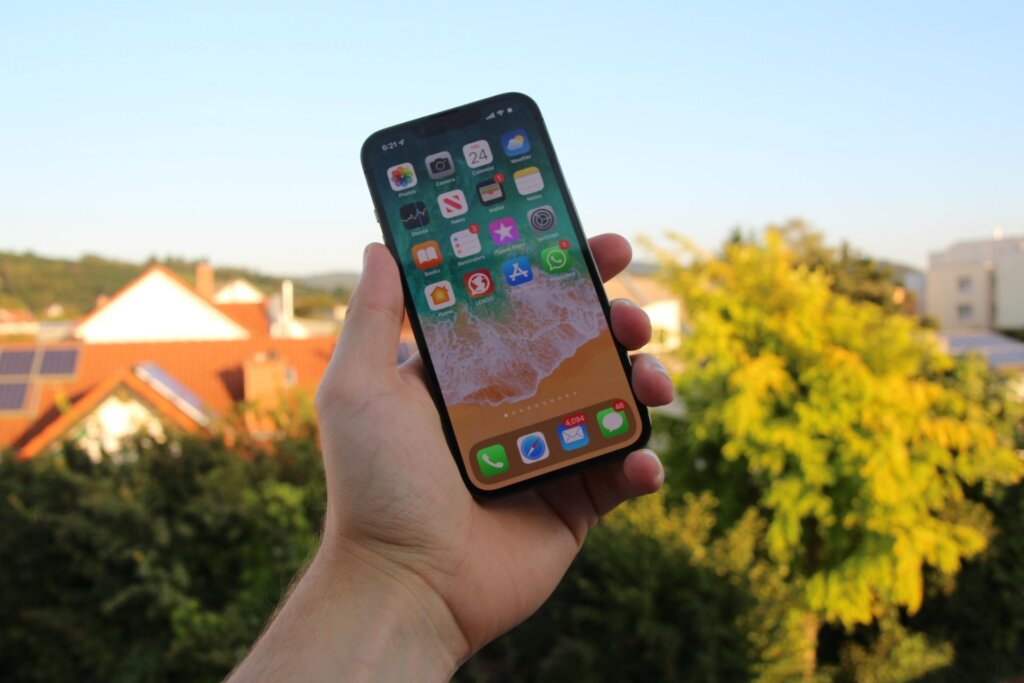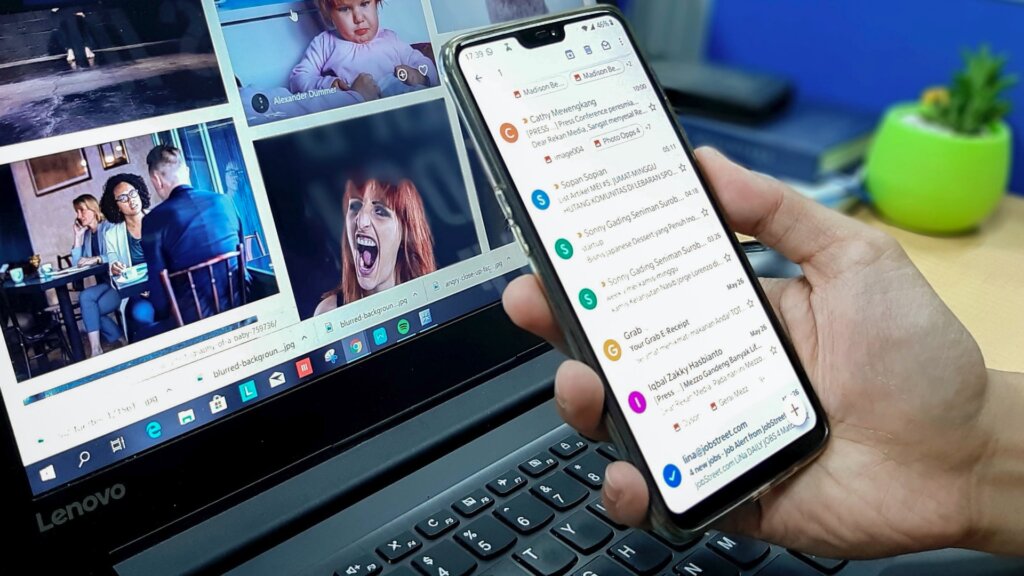Apple’s latest updates for iPhones and iPads, iOS 14.5 and iOS 15, are bringing significant sweeping changes to how personal data is shared, collected and tracked online – and, therefore, to the digital marketing channels that rely on it.
These new changes come off the back of a rising trend for better privacy online that has been building up for a while as individuals online have grown increasingly hesitant to submit their personal data.
iOS 14.5
- What is iOS 14.5, and what does it mean for marketing?
- How the iOS 14.5 update affects Facebook Ads
- Conversions API
- What the iOS 14.5 means for Google Ads
- Google’s response to iOS 14.5
iOS 15
- What the iOS 15 means for marketing
- What the iOS 15 update means for Email Marketers
- iOS 15 Facebook Ads impact
What is iOS 14.5, and what does it mean for marketing?

iOS 14.5 is an update geared towards giving iPhone users more control of how their data is collected or whether it is collected when using apps from the Apple app store or other digital assets by the brand.
For marketers, this means, in short: Reduced user data and tracking.
iOS 14.5’s impact on advertising has been massive, and its ripple effects will probably still evolve for months and years.
Here are iOS 14.5’s prime changes –
- App Tracking Transparency: This lets users control which apps can track their activity across apps and websites of other companies. The purpose of this activity tracking was previously to create ads. Additionally, companies have often shared this information with data brokers to better understand their different consumer groups for marketing or user-experience purposes.
- Tracking Transparency Prompt (ATT): As part of Apple’s App Tracking Transparency, all apps after the iOS 14.5 update must ask users for permission to share their data. Now every iOS app will give you a pop-up requesting you give the app permission to collect data, and you can customise what data you share to your preferences.
- Intelligent Tracking Prevention (ITP): This is a privacy feature of Apple’s browser Safari had long held. ITP protects users from tracking third-party cookies and fingerprinting. But through the iOS 14.5 update, this feature has also been extended to Google Chrome, Chromium and Mathon.
This means fundamentally new changes have needed to process and use personal data to track and measure the performance of a campaign.
Facebook has long piggybacked off a model using personal data to create targeted ads for a personalised user experience.
As much as 70% of iPhone, iPad and Safari users are not opting to have their unique Identifier for Advertisers (IDFA), an identifier for marketers to analyse consumer behaviour on these platforms or devices.
This means that there is much less data to understand exactly how many iOS users are engaging with websites, Google Ads and social media ads.
How the iOS 14.5 update affects Facebook Ads
If someone clicks on an ad on Facebook and goes to your website on an iOS 14.5 device and doesn’t opt into data tracking, Facebook can’t be sure if they purchased the product. This means attribution now suffers in Facebook ad campaigns.
As a result, Meta invested a lot of money into creating new methods to track conversions for their Facebook advertisers.
This brings us to Facebook’s new Conversions API (CAPI).
Conversions API (CAPI)
CAPI is Meta’s answer to connecting your website events and offline conversions at brick-and-mortar stores to Meta. In other words: server-side tracking.
This amasses more marketing data to improve your Facebook ad personalisation and optimise how well Facebook reaches your target audience.
- Reduce cost per action – better connectivity and better event matching
- Improve ad performance measurements – better Facebook event match quality
- Optimised audience targeting
You can also send additional parameters to help the social network identify users through their IDFA.
These parameters fall under three different classes:
- Server Event Parameters
- Custom Data Parameters
- Customer Information Parameters
Facebook Pixel’s previous limitations
As a browser-based tracker, the Meta Pixel was vulnerable to the new ad blockers on the iOS 14.5 update.
“Should Conversion API completely replace Facebook Pixel?”
We don’t recommend replacing Conversions API with Facebook’s pixel. In fact, you can get the best results when you combine these tools together in your strategy for gathering and analysing data. CAPI works as a server-side tracker, whereas Pixel works in the browser.
Conversions API will offer the best results for iOS 14.5 and up users, while Meta Pixel will deliver better insights for those not on these devices or platforms. Together, you can form an as accurate picture as possible.
What the iOS 14.5 means for Google Ads
There are different types of ad campaigns that you can run through Google Ads. We’ll go through each one and how they’ve been affected by the iOS 14.5 update.
App Based Campaigns
App-based campaigns around iOS apps on iOS devices are the most impacted by this update.
Google recommends running no more than 8 app-based campaigns per domain. Otherwise, the missing data will likely degrade your campaign’s performance and measuring results.
For any app-based campaign targeting iOS users, you will also need to configure your app to the SKAdNetwork for more accurate insights into installations while maintaining users’ privacy.
Discovery Campaigns
These ads might appear on Youtube, on the ‘Discover’ section on Google Chrome as well as in Gmail inboxes. After the update (and leading up to it) Google had to remove the ‘gclid=243ds’ section of the links embedded in the URLs that would allow them to track actions and conversions for marketers, for iOS 14.5 users that opted out of tracking.
This means, that attribution and developing an accurate understanding of the conversions for these campaigns have become harder. Google’s discovery campaigns’ ability to audience match may also fluctuate and become less efficient with less data that helps both Google and marketers understand the age, gender, location and parental status of users on iOS 14.5 and above.
Google now uses ‘wbraid’ or ‘gbraid’ url parameters to embed in discovery ads for these users. As marketers, this has also meant that we’ve put more importance on click-through rates as a KPI metric for successful performance.
Display and Banner Campaigns
As Google’s display campaigns are interest-focussed, their performance has also been impacted by the iOS 14.5 update, as it’s hard to deliver personally targeted ads without this data. Attribution on conversion modelling also remains an issue in these campaigns.
Search Campaigns
Thankfully, Google search ad campaigns have been wholly unaffected by the update, as has Google’s organic search results. As search campaigns are centred on Google’s own search queries, it already contains a lot of information that won’t be impacted by the ATT.
Google’s Response to iOS 14.5
Google’s advertising response to combat missing attribution for ad campaigns have been conversion modelling.
Google Analytics 4
The latest version of Google Analytics is coming with more machine learning and statistical tools to create a full and more accurate picture of lost information from iOS users who have opted out of tracking, through a process Google has dubbed conversion modelling.
Conversion Modelling
Google creates estimates on conversions based on observable data that’s similar, such as a lookalike audience, or where Google confidently understands the differences. This helps Google Ad marketers and analysts to see a more accurate and complete picture of a campaign’s performance, and maintain a high-quality bidding strategy to not over or underbid.
This approach also does not compromise the privacy of iOS 14.5+ users, while providing more accurate measurements for your results and for informing your creative strategy and bidding.
What does the iOS 15 mean for marketing?
Apple iOS 15 advertising changes bring more privacy features for emails, apps and web browsing data. Unlike iOS 14.5, iOS 15’s impact on advertising is not as large an overhaul.
Emails
The most impacted by Apple’s iOS 15 is email marketing.

The iOS 15 update blocked the attribution pixel on EDMs for better mail privacy protection. This makes attribution, to measure the effectiveness of email marketing campaigns, incomplete or at least more difficult.
Traditionally, when someone opens an email an attribution pixel is instantly downloaded, alongside the images in the email. This Pixel sends back notice on which email addresses opened the email, the timing the email was opened, how often they opened the email if it was more than once and their IP address to the marketer.
When someone opens their email in Apple’s Mail app, this Pixel is blocked. Meaning this information will no longer be passed on. Instead, anyone with an iOS 15 updated iPhone, iPad or Apple watch will register as open on an email list, no matter whether they did or did not take that action. Leaving your true email open rates in the dark.
Additionally, iOS 15 created a ‘Hide My Email’ feature for subscribers of Apple’s paid iCloud+ service that lets users generate a fake email address. Instead of the sender seeing your real personal email address, they will see this fake email address instead.
Privacy Nutritional Labels
This is a privacy feature in regards to iOS apps.
iOS 15 iPhones and iPads generate a list of the type of data apps installed can access in a ‘privacy nutritional label’ to better help users make decisions on how their personal data is accessed and tracked.
iCloud Private Relay
Private Relay, another paid iCloud+ service feature, is a private network that encrypts web traffic and hides browsing data from Google.
What the iOS 15 Update Means for Email Marketers
Open email rates will no longer be accurate for marketers, considering iOS 15 users who open their emails with Apple’s Mail app.
Therefore, we have changed our approach to measure our EDM strategy’s success and adjust things accordingly to create emails that push people to engage and convert.
Some of these steps for our analysts have included:
- More monitoring of email campaigns
- More managing of email lists
- Using email verification platforms to check that the email addresses of subscribers are real
- More focus on ‘click-through rate’ (which has been largely unaffected) for iOS 15 users to create more accurate insights
- Target subscribers still engaging with content for emails
- More A/B testing needed for subject lines
iOS 15 Facebook Ads Impact
The changes that the iOS 15 operating system brought to email marketing have also run onto Facebook
email campaigns, making open email rates inaccurate.
iOS 15 users will also be able to block their IP address on Facebook and hide their email address from appearing on ‘opened email’ lists.
In response, we may change and create new KPIs to track a Facebook ad campaign’s performance. Facebook’s conversion modelling tool CAPI has also helped fill in the blanks to provide a more accurate understanding of ad performance with android, Apple, and desktop users.
Other Frequently Asked Questions
Here are some other common questions that people have about the iOS 14 and 15 updates –
Q. Apple’s advertising on Facebook impact
A. Apple’s privacy marketing policies and tools have severely affected Meta’s stock price in 2021. Facebook marketers have dealt with fluctuations and also have had to adapt to changes in strategy, KPIs and A/B testing. However, with CAPI and other tools, Facebook ads have been performing better recently compared to the initial months of iOS 14.5’s and iOS 15’s releases.
Q. Which Apple’s digital advertising services can I use for app campaigns?
A. Apple Search Ads is Apple’s own digital advertising platform that is used to advertise apps for iOS. Basic is Apple’s more hands-free model, whereas advanced provides the tools to customise ads for better results.
Want to Learn More?
Stay tuned for our blogs, or contact us to get in touch with our analysts.
We’re dedicated to assisting your business’s marketing goals with our data-led strategies and personalised campaigns.




